Designing Computer Furniture
Considering components and user comfort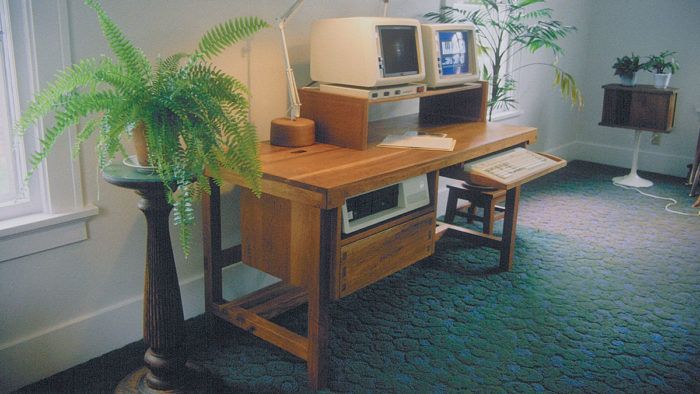
Fine Woodworking’s Sandor Nagyszalanczy finds the warmth of wood a pleasant contrast to the high-tech austerity of computer components, and he visited with more than a dozen cabinetmakers and furniture makers to see how they build computer system pieces. He outlines design requirements for computer desks, such as height, ventilation, and flexibility, and talks about the different types of desks available. He covers work surfaces, storage, and lighting, dimensions, and adjustability, and construction and materials. Seating is also discussed. A side article covers accommodating computer accessories.
Whether we like them or not, computers have become integral parts of our lives, and they’re here to stay. Computers handle our finances, connect our phone calls and teach our children. And while we can’t ignore computers, few people seem concerned about furniture for them. Some folks think any object can be transformed into a piece of computer furniture just by setting a computer on it. I’ve seen one digitally possessed person pecking away on a keyboard set on an old orange crate, watching a monitor propped up on the floor by a carton of cigarettes—Neanderthal furnishings for high-tech tools.
Fortunately, more suitable furnishings for computers do exist. There are many commercially available workstations made from metals and plastics. However, the warmth of wood provides a pleasant contrast to the high-tech austerity of computer components, and many people are wiling to pay for well-designed, custom-built units to harmonize with other furniture pieces in their homes and offices. In researching this article, I visited with more than a dozen cabinetmakers and furnituremakers who built pieces to house personal computer systems. While the work pictured here and other pieces I saw generally were attractive and well built, I was surprised at the small amount of wooden computer furniture being built, considering the proliferation of computers.
Part of the reason may be complexity: Though not nearly as complex as microchips and computer software, designing a good piece of computer furniture can be as demanding as developing the most sophisticated desk or cabinet. A well-designed computer workstation—the modern equivalent of a desk—needs to fulfill an impressive set of requirements. The equipment itself has specific needs: Components must be accessible to a seated worker, and they must be well ventilated and easily wired together. In addition, the workstation must accommodate a comfortable seat. Most workstations also serve as regular desks for paperwork. In an office in which several persons share the same computer equipment, a workstation must be flexible enough to be adapted to different people, as well as provide room for future additions to the computer system.
These diverse requirements don’t mean you have to be an engineer or a magician to build a first-class workstation that’s functionally and ergonomically suited to your needs. There are few restrictions on the construction methods or joinery; workstations don’t require special abilities outside the realm of basic woodworking skills. This article will outline how to design and build a piece of computer furniture, as well as provide general dimensions for a typical workstation. A description of the most common computer components and hints on accommodating them in your furniture piece are provided in the sidebar on pp. 35-37. First, let’s examine a few different kinds of furnishings that can function as computer workstations.
From Fine Woodworking #77
For the full article, download the PDF below:
Fine Woodworking Recommended Products

Drafting Tools

Dividers

Compass



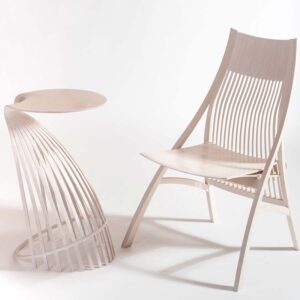
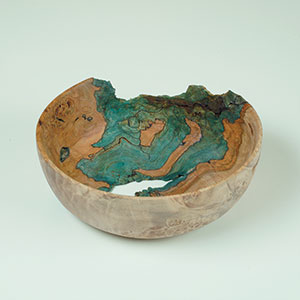
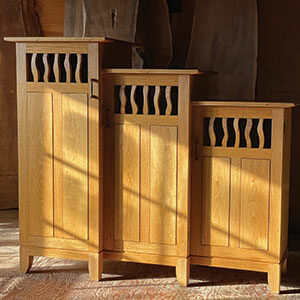






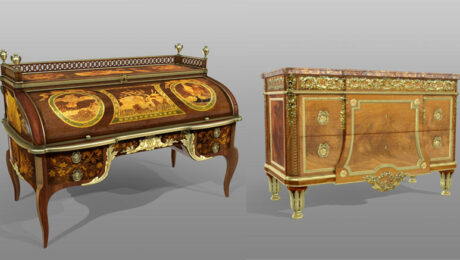








Log in or create an account to post a comment.
Sign up Log in